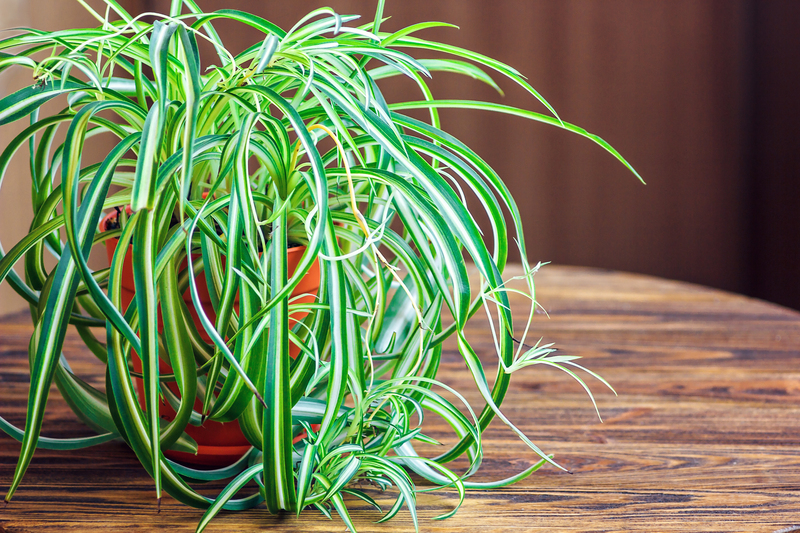Zen Garden Aesthetics for an Idyllic and Peaceful Space
Posted on 28/09/2025
Zen Garden Aesthetics for an Idyllic and Peaceful Space
Are you dreaming of a peaceful retreat right in your backyard or corner of your home? Discover the timeless allure and serenity of Zen Garden aesthetics. These tranquil spaces are designed to foster calm, mindfulness, and a sense of harmony between man and nature. In this comprehensive guide, we'll explore how Zen Gardens embody idyllic and peaceful spaces, delve into their design principles, and offer practical tips to help you create your own Zen-inspired sanctuary.

Understanding Zen Gardens: Origins and Philosophy
Zen Gardens, or Karesansui in Japanese, have a long and profound history rooted in Buddhist philosophy. Developed in Japan around the 14th century, these gardens were used as meditation spaces in Zen Buddhist temples. They're designed to represent an idealized landscape, often symbolizing mountains, rivers, and islands, all within a minimalist layout.
The Spiritual Purpose of Zen Garden Aesthetics
- Encouraging Mindfulness: The simple yet deliberate placement of rocks, sand, and plants cultivates a sense of inner peace and clarity.
- Reflection of Nature: Elements are chosen and arranged to echo the profound beauty of the natural world.
- Simplicity and Minimalism: Each feature is curated for balance, making the space free from distractions and clutter.
Key Elements of Zen Garden Design
Every component in a Zen-inspired garden is carefully selected to evoke a sense of tranquility. Here are the core elements that form the foundation of Zen Garden aesthetics:
1. Stones and Rocks: The Backbone of Zen Landscapes
Large stones represent islands or mountains. Their arrangement follows ancient patterns, ensuring each rock has a purpose within the composition. Stones symbolize stability and endurance, core virtues in Zen philosophy.
2. Gravel or Sand: The Sea of Peace
Gravel or raked sand forms the garden's 'ocean,' with patterns drawn to mimic waves and water flow. The process of raking sand is itself a meditative act, promoting mindfulness and focus.
3. Moss and Plants: Touches of Life and Color
While minimal plants are used, moss and evergreens add a subtle green palette, representing renewal, continuity, and a link to nature's cycles. Carefully pruned shrubs sometimes appear, each chosen for their shape and symbolism.
4. Water Features: Subtle, Soothing, and Symbolic
Although not always present, small ponds, streams, or stone basins can amplify the sense of tranquility. Even the absence of water--represented by raked sand--invites imagination and contemplation.
5. Bridges, Lanterns, and Ornaments: Accents with Meaning
Traditional stone lanterns, pagodas, or stepping stones serve as points of interest, guiding the gaze and footsteps. Each element adds layers to the symbolism and peacefulness of the landscape.
Design Principles for Creating a Zen-Inspired Space
A true idyllic and peaceful Zen Garden is all about balance and harmony. Here are key design principles that ensure your space stays true to Zen aesthetics:
- Asymmetry: Avoid rigid symmetry. Instead, embrace the irregular and natural flow evoking organic beauty.
- Simplicity: Less is always more. Every element should have intent and meaning.
- Enclosure: Use fences, walls, or natural borders to create an intimate, enclosed sanctuary.
- Borrowed Scenery: Integrate views beyond the garden, like distant trees or mountains, to enhance a sense of depth and expansiveness.
- Balance of Elements: Combine stone, sand, and plants in a harmonious way, avoiding overcrowding.
- Naturalness: Let each rock and plant appear as if it simply belongs there, uncontrived and authentic.
Tips for Small Zen Gardens and Urban Spaces
Even with limited space, you can create a peaceful Zen retreat:
- Use a small tray or dish to build a miniature Zen garden for your desk or window ledge.
- Focus on a few key stones and a small patch of gravel or sand.
- Opt for potted moss or a tiny water basin for natural tranquility.
- Incorporate bamboo screens or fences to provide enclosure and privacy.
How Zen Garden Aesthetics Influence Wellbeing
In today's fast-paced world, nurturing idyllic and peaceful Zen garden spaces at home can be transformative for mental and physical wellbeing.
Benefits of Zen-Inspired Gardens
- Stress Relief: The meditative process of raking sand or simply sitting amidst the tranquil environment helps reduce anxiety and tension.
- Mindfulness Practice: Focusing on subtle details, such as the growth of moss or the arrangement of stones, nurtures mindfulness and present-moment awareness.
- Creativity and Clarity: Minimalist settings clear mental clutter, making space for inspiration and problem-solving.
- Connection to Nature: Even a small Zen spot restores the vital connection we share with the earth's rhythms and elements.
- Improved Focus: Design elements encourage contemplation and sharpen concentration.
Essential Steps to Creating a Zen Garden at Home
1. Planning Your Space
Assess your garden, patio, balcony, or indoor corner for potential. Even the smallest areas can become a peaceful Zen retreat. Think about sun exposure, privacy, and how you want to experience the space--morning meditation, afternoon relaxing, or nighttime contemplation.
2. Selecting Materials
Gather natural materials such as:
- Washed gravel or white sand
- Various stones and boulders
- Moss, bamboo, and hardy evergreens
- Wood for borders or raised platforms
- Stone lanterns and water basins, if desired
3. Arranging the Landscape
Start with the largest stones as the foundation, then position smaller rocks and features in visually pleasing, natural-looking patterns. Add sand or gravel, using a rake to draw gentle waves or spiral motifs that enhance the feeling of calm.
4. Planting and Accents
Minimal planting is key for an authentic Zen aesthetic. Stick to a restrained palette, prioritizing evergreen mosses, dwarf conifers, and bamboo. Intersperse stepping stones, stone lanterns, or low benches for meditation and enjoyment.
5. Maintenance and Mindfulness
Keeping a Zen Garden is an ongoing process. Prune plants, remove fallen leaves, and refresh gravel patterns as a form of moving meditation--bringing tranquility into both your garden and daily life.
Decorative Additions for Contemporary Zen-Inspired Gardens
Modern Zen aesthetics blend tradition and innovation, making way for creative decorations while maintaining classic tranquility.
- Japanese maples: Their vibrant leaves add gentle color while respecting minimalist philosophies.
- Water features: Sleek, solar-powered fountains or koi ponds offer soothing sounds and visual interest.
- Artisanal lanterns: Modern stone or metal versions lend an elegant touch.
- Art pieces: Abstract sculptures or driftwood, in small numbers, enhance the sense of serenity.
- Weathered wood: Incorporate timber benches or screens for warmth and texture.
Zen Garden Aesthetics for Different Environments
1. Outdoor Zen Retreats
Transform a backyard or patio into your own idyllic Zen garden sanctuary. Use dry landscape elements to minimize water usage, and apply traditional Japanese design principles to blend with your surroundings.
2. Indoor Zen Corners
Bring Zen-like calm indoors with tabletop gardens, small rock arrangements, or even a minimalist plant-and-stone composition in your living room or hallway.
3. Balcony and Rooftop Zen Spaces
Urban dwellers can leverage balconies or rooftops, using potted plants, pebble beds, and compact water features to create peaceful sky-high escapes.

Common Questions About Zen Garden Aesthetics
What is the Difference Between a Japanese and a Zen Garden?
While all Zen gardens are Japanese, not all Japanese gardens are Zen. Zen gardens are typically more minimalist, focusing on stones, gravel, and very few plants, while broader Japanese gardens may feature ponds, bridges, and abundant planting.
Is it Difficult to Maintain a Zen Garden?
Zen gardens are designed for easy maintenance. Most require regular raking of sand and occasional pruning of plants--tasks that become meditative rituals rather than chores.
Can I Personalize My Zen Garden?
Absolutely! While traditional principles foster authenticity, feel free to adapt the Zen garden aesthetic to suit your taste. Use different stones, local plants, or contemporary sculptures--just remember that harmony and intention are central to the style.
Conclusion: Achieve Peace and Harmony With Zen Garden Aesthetics
A Zen garden isn't merely an outdoor decor choice--it's a pathway to achieving inner peace, mindfulness, and harmonious living. By embracing simplicity, balance, and the timeless beauty of nature, you can create an idyllic Zen-inspired sanctuary that soothes, inspires, and restores. Whether a sprawling outdoor oasis or a compact indoor arrangement, Zen garden aesthetics will transform your space and your state of mind. Begin your journey today and invite peace, clarity, and serenity into your daily life!
```
